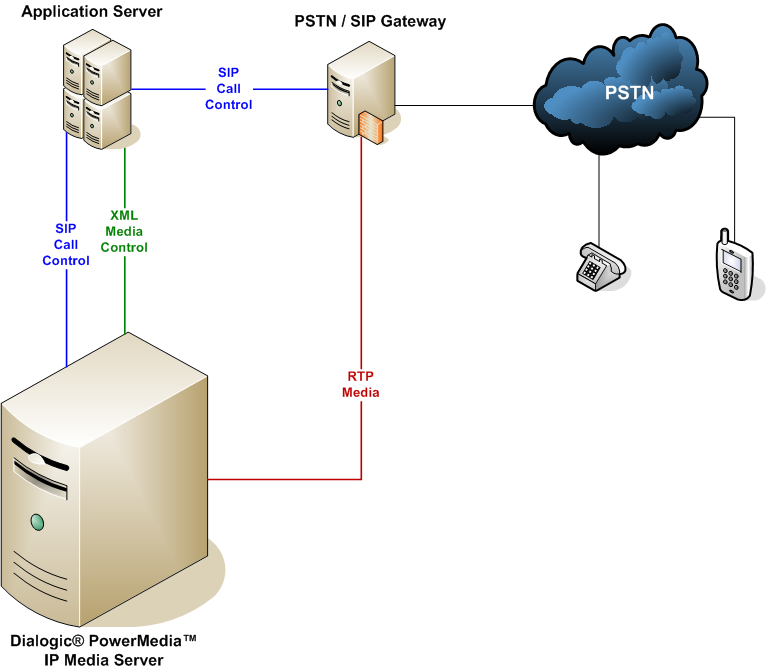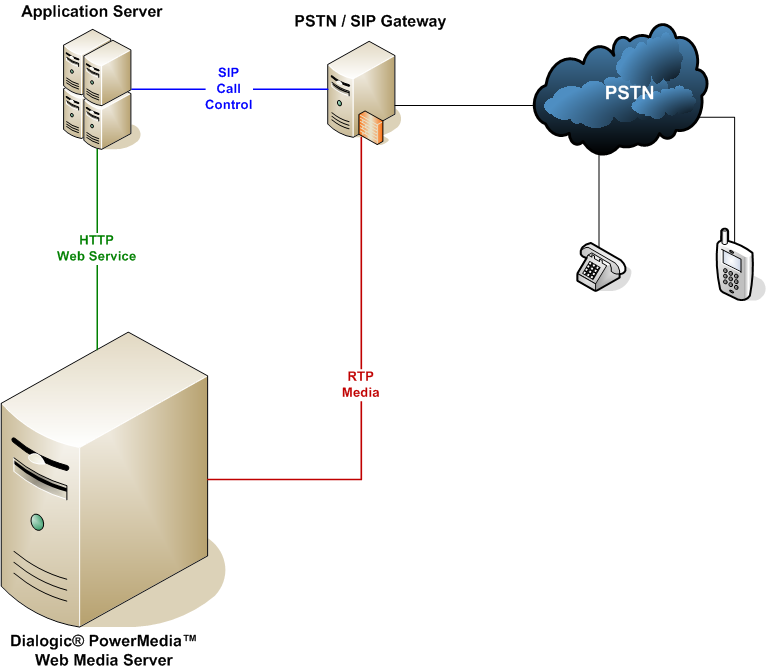
The following is an overview of how the PowerMedia WMS differs from the traditional Dialogic® PowerMedia™ IP Media Server configuration.
The Dialogic® PowerMedia™ IP Media Server (also referred to herein as "PowerMedia IPMS") is a software-based product that provides media control functionality such as playing and recording audio and video, audio and video conferencing, and advanced audio and video processing.
Traditionally, an application uses SIP, VoiceXML, NetAnn, or MSCML to control the PowerMedia IPMS and initiate the specific media processing functionality desired. An active SIP call is required between the PowerMedia IPMS and the application server for each remote telephony endpoint that will be transmitting or receiving media to/from the PowerMedia IPMS.
This required SIP session serves a dual role:
The following diagram reflects a simplified topology of an example of a traditional PowerMedia IPMS configuration.

The PowerMedia WMS provides a Web 2.0 interface for media control. This media control interface uses HTTP requests and responses to perform media control operations.
The PowerMedia WMS uses HTTP streaming technologies to enable the client to receive asynchronous event notifications. The PowerMedia WMS does not use SIP call control. In fact, the PowerMedia WMS is not involved in call control signaling, which makes it easier to be used by web developers even if they are not very familiar with telephony development.
The following diagram reflects a simplified topology of an example of a PowerMedia WMS configuration.
